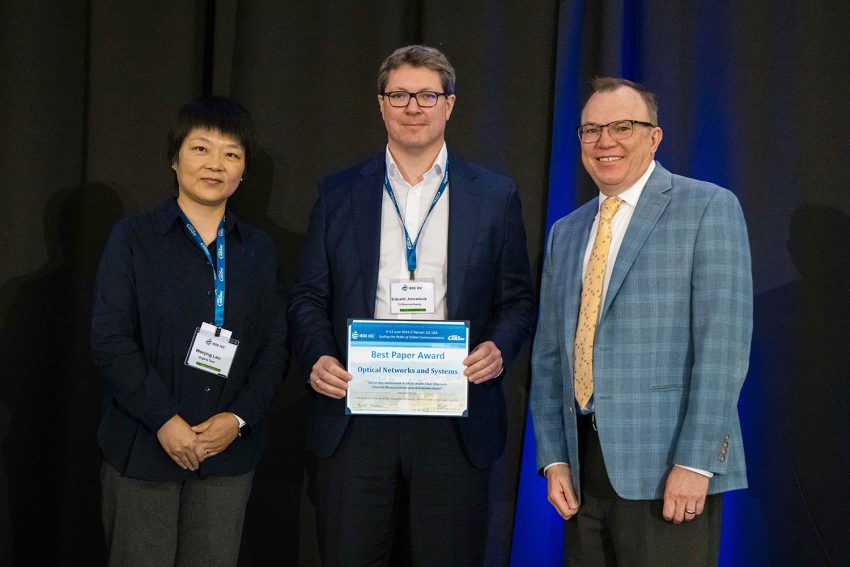Secure against quantum computer attacks Best Paper Award for team of authors led by Prof. Eduard Jorswieck
A paper on encryption in fibre optic communication has won an IEEE ICC Best Paper Award. The authors are Dr. Pin-Hsun Lin, Mr. Paul Nowitzki and Prof. Eduard Jorswieck from TU Braunschweig, and Dennis Pohle and Prof. Jürgen Czarske from TU Dresden. The award was officially presented at the IEEE International Conference on Communications (ICC) in Denver, USA, on 12 June 2002.

At the award ceremony in the USA: Wenye Wang (North Carolina State University), Eduard Jorswieck (TU Braunschweig) and Matthew Valenti (West Virginia University). Photo credit: Monarch Event Photography
The IEEE International Conference on Communications is the largest and most important international conference of the IEEE Communications Society. In the field of communications engineering, there is no larger or more important conference in the world. This year, only 15 papers were selected for a Best Paper Award. “Considering that 2,364 papers were submitted this year, this award is indeed a significant achievement,” says Prof. Eduard Jorswieck.
The winning paper, entitled “Secret Key Generation in Multi-Mode Fibre Channels: Channel Measurements and Achievable Rates” deals with the fundamental limitations of secure key generation when communicating over an optical fibre channel. The optical fibre is used in the classical way and no quantum effects are exploited. Nevertheless, the generated key is secure against attacks from quantum computers.
The paper is the result of an interdisciplinary collaboration between Communications Engineering (TU Braunschweig) and Measurement Technology (TU Dresden). The metrology department was able to measure so-called multimode fibre channels in the experiment. These measurements form the basis for the calculation of the secure key rate by the communications engineering department. It is particularly noteworthy that the attacker, who taps directly into the fibre optic connection and redirects light, does not receive sufficient information to calculate the key.
The method described here is an efficient and scalable alternative to quantum key distribution (QKD). In both approaches, authorised communication partners receive a secure key to transmit data in a tap-proof manner. QKD makes use of quantum effects in the optical fibre. The approach of Jorswieck et al. uses classical communication technology via optical fibres.
For example, the multi-mode method allows the secure generation of keys via fibre-optic links, which are used to connect base stations in mobile communications. However, very long optical links can also be used to generate secure keys without the need for a quantum repeater. Banks with branches in different countries or government institutions in different countries can thus generate secure keys that are then used for confidential and authenticated communication.
Original publication:
P.-H. Lin, P. Nowitzki, E. Jorswieck, D. Pohle, “Secret Key Generation in Multi-Mode Fibre Channels: Channel Measurements and Achievable Rates”, IEEE ICC 2024
